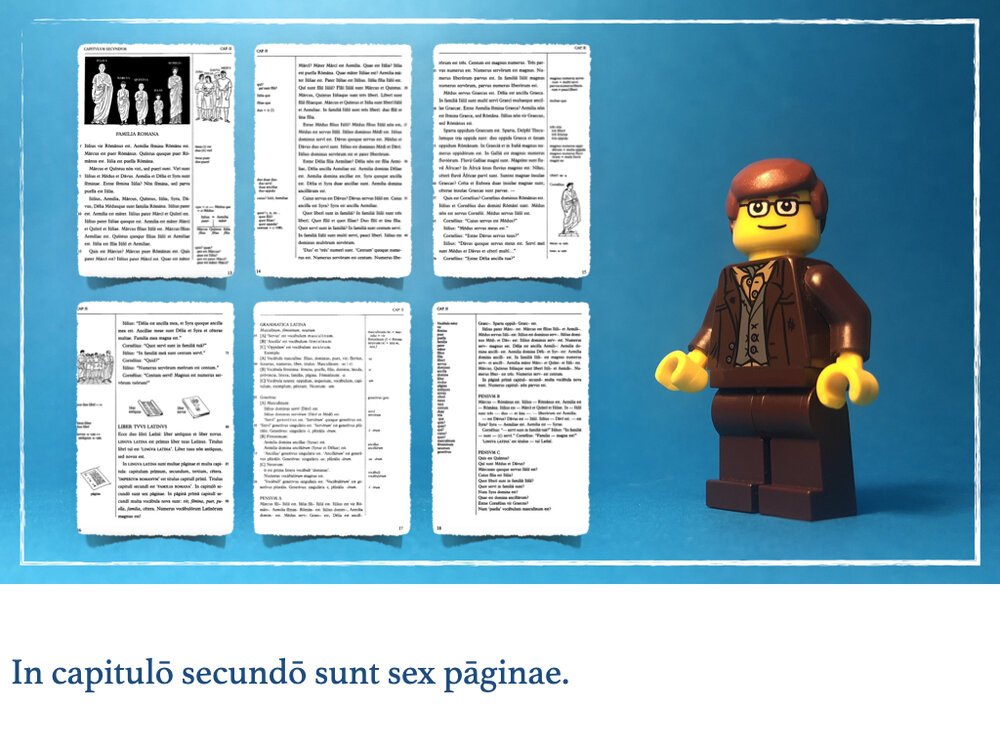I began by reminding the students that their familia books are due soon. Note: Some of the books have already started to come in, and they look great!
2. At the end of the last lesson (see Lesson Seventeen) I asked the students to note anything that they had not understood in the reading. The word ceteri came up more than any other thing. I wrote ceteri, ceterae, cetera up on the board, explaining that they all meant other. I then added a noun to each, to give them context. One student did ask if the multiple endings had something to do with gender, and I said yes, and that we would be returning to this at the end of the lesson. I finished by pointing out the meaning of ‘et cetera’, thinking that they would all stand on their tables and shout ‘o captain my captain’ but was sadly disappointed.
3. I explained to the students that they were going to do another translation activity (their second so far), translating Latin into English. I wanted to collect these, to check their understanding, so I gave them a worksheet on which to complete their translation. I gave them 1 minutes to read the instructions (see below), then ask any questions, then another 15 minutes to translate. Many finished right on the 15 minute mark. I made it very clear that finishing was not necessary. All worksheets can be downloaded here. Note: I’ve looked over their translations, and I am extremely confident that - so far - they are understanding what they are reading.
4. While the students were working on their translations, I wrote a short list of words up onto the board, and got the last section of Capitulum Secundum ready for us to read together. I said that as we read through it, I wanted them to write what they thought might be an appropriate English equivalent for each of the words on the board. You can access the Capitulum Secundum slides here. Note: Some students remembered seeing these words from Gimkit. It seems that a few students have been using Gimkit semi-regularly on their own.
5. After reading through the text I called out each Latin word, and the students responded by calling out an English equivalent. I’d say there was at least a 90% success rate. Interestingly, the word that caused the most trouble was one they had met in chapter one - with many students calling out “vocabulary” instead of “word” for vocabulum.
6. I asked all of the students to take out their text books. I have an older copy of the book, so I made a HUGE point of saying to one of the students “meus liber antiquus est, sed tuus liber est novus.” which they all understood. I asked them to turn to page 10, and pointed out that at the end of every single chapter there is a handy summary - GRAMMATICA LATINA - of “some of the things” introduced in the chapter. We read through the Singularis et pluralis entry for chapter 1 and Masculinum, femininum, neutrum for chapter 2. I felt that for many of them, this tiny summary set in stone much that they had gathered by osmosis.




